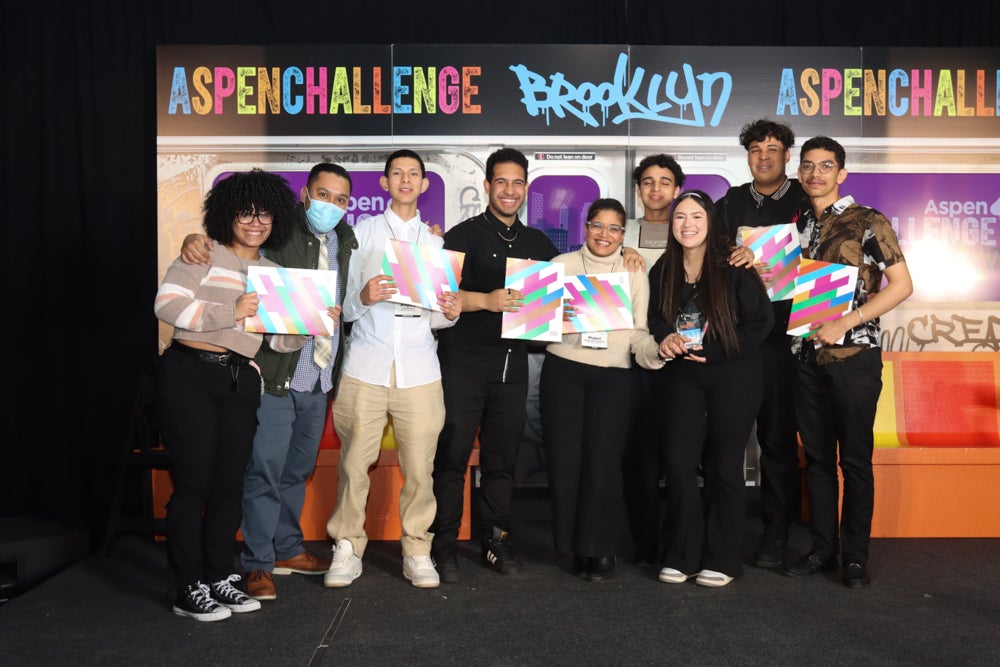Recently, a bright, young organization I work with was stuck. Employees had lodged a variety of complaints on an anonymous survey and after the initial sting had passed, executives were prepared to share the feedback in a company town hall. They assembled a thoughtful presentation with a mixture of acknowledgment and concrete action steps. So far, so good. Yet the town hall was a disaster with tears and accusations in equal mix. Afterward, employees and executives alike were threatening to resign, shutter the company, walk out, and fire each other. What went wrong?
They shared the video recording of the meeting with me and what I saw was an all-too-typical meeting. Executives talking “at” the employees. Employees reading statements they had prepared. A few vocal, passionate people dominating and cutting each other off. Many people afraid to say a word. In short, it was a lousy conversation that resulted in greater mutual mistrust and disrespect than before.
Whether online or offline, in family, organizational or community settings, having conversations about difficult topics has become treacherous. So much so, that a new field of study, called erisology, or the science of argument, has cropped up to join the volumes of research on negotiation and conflict. As its originator, John Nerst recently defined it:
Erisology is the study of disagreement, specifically the study of unsuccessful disagreement. An unsuccessful disagreement is an exchange where people are no closer in understanding at the end than they were at the beginning, meaning the exchange has been mostly about talking past each other and/or hurling insults. A really unsuccessful one is where people actually push each other apart, and this seems disturbingly common.
(As an interesting Aspen-related footnote, Nerst derived the word erisology from Eris, the Greek goddess of strife and discord, who allegedly started the Trojan War by tossing the “Apple of Discord” into a wedding party of Peleus and Thetis – well before the 2002 classic, My Big Fat Greek Wedding.)
Yet, every day, somewhere on the Aspen campuses, conversations are happening that are quite different. Whether in our seminars or in our policy programs, Aspen conversations tackle some of the most difficult challenges of our time, with people who come from entirely different positions. And yet, rather than bring out the worst, these conversations seem to bring out the best, leading to greater understanding, trust, and progress. And it makes me wonder whether the “Aspen Method” of conversation could be applied more frequently, in more settings, to an even more powerful impact.
What is the Aspen Method? I am not sure that there is one, but after almost 20 years of moderating, I’ve come to the following essential ingredients.
- A calm and neutral setting: In 1971, a UCLA psychologist, Albert Mehrabian, published a book, Silent Messages, asserting the importance of nonverbal messages in feelings and attitudes. In it, he put forward the 7%-38%-55% Rule. 55% of attitudes come from body language, 38% from tone of voice, and 7% from the actual words. The design of our Aspen Seminar rooms and the ground rules we establish discouraging electronic and other distractions, help set a constructive tone for our conversations. Since we can’t travel to Aspen for all of our difficult conversations, could we hold difficult conversations in a neutral setting where people face each other around a circular table? Or consider the conversations we have outside the seminar room while hiking and having meals. The ancient Greeks had the peripatetic school of philosophy, where teachers taught by walking around with students. If you are faced with a difficult conversation with another person, consider the benefits of a walking meeting, which reduces hierarchical relationships and has other advantages, (as Nilofer Merchant pointed out in her recent TED talk.)
- Aspen Model of Common Ground and Deep Listening: Aspen seminars are designed around a set of readings, typically juxtaposed around two fundamentally different sides to an argument. We try to find the most articulate arguments – consider Hobbes view of human nature alongside Mencius or Plato’s view of “the good” alongside Berlin’s. We first endeavor to understand these differing arguments, even “steel man” them, using Rapoport’s Rules as Daniel Dennet suggests in his book, Intuition Pumps and Other Tools for Thinking. Dennet describes the method as:
- You should attempt to re-express your target’s position so clearly, vividly, and fairly that your target says, “Thanks, I wish I’d thought of putting it that way.”
- You should list any points of agreement (especially if they are not matters of general or widespread agreement).
- You should mention anything you have learned from your target.
- Only then are you permitted to say so much as a word of rebuttal or criticism.
After understanding the different arguments the authors offer, we then explore the gap between them, and as Sheila Heen and Douglas Stone describe, we get to the third story. We invite seminarians to consider the tension between opposing ideas of the good, the gap between them and how they might resolve that gap for themselves. Imagine approaching conversations this way rather than a zero-sum game – more of a collaboration and tango toward truth, “not so much a duel but a duet.” Todd Breyfogle describes this principle as “what we can agree on after we’ve really listened to each other.”
- Deep Listening and Socratic Dialogue: Perhaps the most important ingredient of the Aspen Method is an insistence on deep listening. Pete Thigpen, a senior moderator and dear friend to many of us, started every seminar by saying “God gave us two ears and one mouth for a reason.” But consider how much more we use that one mouth, to focus on making statements, defending our positions, attacking other positions, and winning debates rather than hearing each other, trying to understand what the other is saying, and letting them know that we have heard and understood.
In the seminar room, we encourage deep listening through some fairly simple ground rules:
- Everyone talks once before someone talks twice: We try to prevent loud voices from dominating to encourage everyone an opportunity to speak. We hope this facilitates opportunities for listening as well as speaking.
- The two-minute rule: While not strictly followed, we encourage people to self-censor, to make their points in no more than two minutes so that others may chime in. And as senior moderator Keith Berwick says, one of the moderator’s most important roles is to get “the talkative people to be quiet and the quiet people to talk.”
- Questions form the basis for Socratic dialogue: Questions are the real currency of listening. Whether clarifying or probing, questions offer us a route to understanding each other and to finding common ground. And shared questioning around the full table of participants represents the finest stage of group dialogue. It is the height of the seminar experience when participants take over to ask each other questions and learn from each other. In fact, my moderator mentor, Stephen Carter, uses sociograms to map the seminar conversation and ensure that he is not the center of attention. If all the lines went to and from the moderator, it was a failed conversation. What would a sociogram of your conversations reveal?
- Silence is celebrated: When we create space for silence in our conversations, we create space for possibilities. Too often a vacuum in conversation is filled before it can offer people the time to think for themselves or explore their preconceptions.
Whenever I am in a heated conversation, about important topics, whether in my family, my business, or my community, I try to apply these principles of the Aspen method of dialogue. And as for the organization I mentioned at the outset, with some guidance, they set ground rules to help them have better conversations in subsequent meetings. They are still working on their issues, but they are making progress and experiencing stronger feelings of psychological safety and trust. Their conversations are fueling optimism rather than despondency. Perhaps if we all focus on the quality of our dialogue and adopt the Aspen method, we too could find more bridges across our differences, better understanding and learning from one another and finding creative solutions to our challenges.
The views and opinions of the author are his own and do not necessarily reflect the view of The Aspen Institute or the Aspen Executive Leadership Seminars Department.
Lynne has been an Aspen Moderator for 18 years and participated in the Aspen Executive Seminar in August 2000.
Lynne Waldera is founder and CEO of InMomentum, Inc., a privately held management consultancy founded in 1999 and focused on organization and executive strategy and development for companies in dynamic markets.

